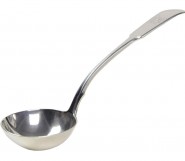Lot #39 - Howard Arkley
-
Auction House:Deutscher and Hackett
-
Sale Name:Important Australian + International Fine Art
-
Sale Date:22 Nov 2023 ~ 7pm (AEDT)
-
Lot #:39
-
Lot Description:Howard Arkley
(1951 - 1999)
Physiognomy, 1987
synthetic polymer paint on canvas
163.0 x 122.0 cm
signed and dated verso: Howard Arkley 87. signed, dated and inscribed with title verso: HOWARD ARKLEY / "Physiognomy" / 1987
REFERENCES: Crawford, A., and Edgar, R., Spray: The Work of Howard Arkley , Craftsman House, Sydney, revised edition 2001, p. 76 (illus. as 'Strange Fruit') Gregory, J., Carnival in Suburbia, The Art of Howard Arkley , Cambridge University Press, Melbourne, 2006, fig. 6.14, p. 169 Fitzpatrick, A., and Lynn, V., Howard Arkley and Friends , Tarrawarra Museum of Art, Victoria, 2015, pp. 96 (illus., as 'Strange Fruit'), 143 Howard Arkley Online Catalogue Raisonné: [https://www.arkleyworks.com/blog/2009/11/19/physiognomy-1987/] (accessed 9/10/23) -
Provenance:Private collection Deutscher~Menzies, Melbourne, 25 - 26 April 1999, lot 248 (as 'The Physiognomy') The Estate of the Late Alan Cardy, Sydney
-
Exhibited:Howard Arkley: Suburban urban messages , Roslyn Oxley9 Gallery, Sydney, 2 - 19 September 1987, cat. 11 (as 'Happenstance') Howard Arkley , Bellas Gallery, Brisbane, 13 June - 1 July 1989, cat. 2 Howard Arkley and Friends, TarraWarra Museum of Art, Victoria, 5 December 2015 - 28 February 2016 (as 'Strange Fruit')
-
Notes:When Howard Arkley died in July 1999 just three days after his return to Melbourne following the enormous success of his exhibition The Home Show at the Venice Biennale, the career of one of Australia's most highly productive and endlessly innovative contemporary artists was tragically cut short. However, as a painting such as Physiognomy , 1987 highlights, Arkley's work never ceases to surprise and delight in both its unexpected combination of colour and form, and in its ability to continually reveal the artist's idiosyncratic grab-bag approach to inspiration and making. As curator Anthony Fitzpatrick has astutely observed: '...it was this kind of unresolved, liminal juncture between high and low, reality and simulation, planning and improvisation, rational and irrational, the abstracted and the constructed, detachment and involvement, firsthand experience and second degree quotation, that Arkley occupied throughout his entire career. From a seemingly endless flow of dislocated and disjointed cultural fragments, the artist generated and synthesised his own web of references and connections, a method and a structure that would underpin his potent, highly distinctive and instantly recognisable visual identity.'1 Physiognomy was first exhibited in September 1987 at Roslyn Oxley9 Gallery, Sydney under the name Happenstance, 1987 and was subsequently shown at Bellas Gallery, Brisbane in June 1989 under its present title.2 Part of a group of intriguing images that transformed cactus-like forms into strange humanoid creatures (with some more obviously bearing human body parts, such as arms and legs, often placed in anatomically impossible positions) the work was a creative and decorative extension of the artist's exhibition Howard Arkley: Cacti and Succulents held at Roslyn Oxley9 Gallery, Sydney in May 1984. The spiky, somewhat surreal forms of these plants obviously appealed to Arkley, who emphasised their structural qualities through his expressive and skilled use of the airbrush and celebratory combination of decorative elements. While the work's title refers to the capacity to determine a subject's personality or character through their facial features, Arkley's teardrop shaped 'head' remains blank, revealing nothing. This impenetrable visage, with its areas of rich block colour and dotted hairlike tendrils become the perfect foil for the shifting chromatic spectrum of Arkley's complex crisscross background and black spray outline, which seem to physically pulse, and always hover, on the edge of focus. Drawing upon the imaginative lineage of Surrealism and Pop, Arkley often replaced the human head with a cactus in his drawings, and in turn, his first major portraits - Tattooed Head, 1983 (Collection TarraWarra Museum of Art) and Zappo Head , 1987 (Bendigo Art Gallery) - included several plant-like features.3 Over time, these cactus heads became 'something of a signature for the artist's persona - another alter ego and mask'.4 As Arkley's wife and long-term assistant, Alison Burton has recalled: '...I often associate [his cacti succulent works] as particularly characteristic of him. They were a motif Howard used many times in his sketches and doodles, meandering across newspapers, coasters and novels, anything that he could draw on. I think his cacti works to be rather like I remember him, spiky, quirky and sometimes chaotic, but also contained, thoughtful and ordered.'5 1. Fitzpatrick, A., 'Sampling: The Art of Howard Arkley' in Fitzpatrick, A. & Lynn, V., Howard Arkley and Friends , TarraWarra Museum of Art, Healesville, 2015, p. 22 2. John Gregory has since determined that Happenstance, 1987 is another composition : https://www.arkleyworks.com/blog/2009/11/19/happenstance-1987/ (accessed 24 October 2023) 3. See Lynn, op. cit., p. 62 and Fitzpatrick, op. cit., p. 18 4. Lynn, ibid. 5. ibid. KELLY GELLATLY
-
Estimate:A$60,000 - 80,000
-
Realised Price:
-
Category:Art
This Sale has been held and this item is no longer available. Details are provided for information purposes only.










